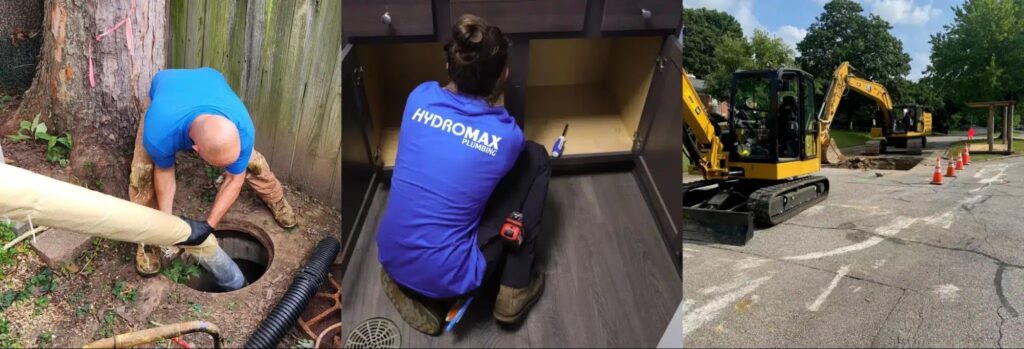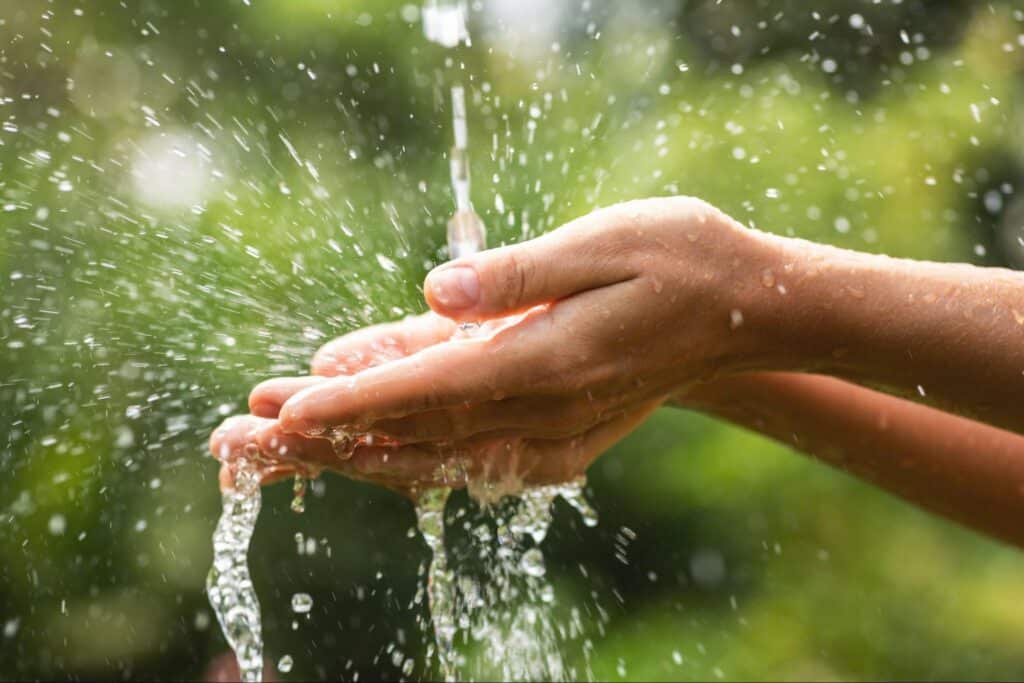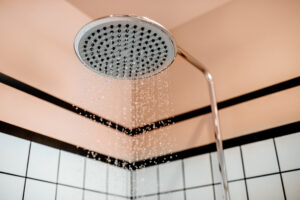Water conservation is a critical practice for safeguarding our local and global water supplies, but its benefits are also immediate and personal. For homes, businesses, and industries, smart water usage directly translates to lower utility bills and reduced operational costs, making it both an environmentally and economically wise decision. In a region like Evansville, Indiana, which relies on efficient and reliable plumbing, taking proactive steps to manage water is essential for long-term sustainability.
This guide is designed to empower you with those proactive steps. We will explore a wide range of actionable strategies tailored for residential, commercial, industrial, and municipal settings. From simple tips for spotting leaks and upgrading fixtures to an overview of advanced plumbing technologies, this article provides the practical knowledge you need to conserve water effectively, reduce waste, and make a positive impact without compromising performance.
Why Every Drop Counts: The Case for Water Conservation
Water conservation is more than just a responsible practice—it’s a multifaceted necessity for safeguarding natural resources, reducing costs, and ensuring a sustainable future. Every drop of water saved contributes to a healthier environment and a healthier bottom line through several key benefits:
- Economic Savings: For homeowners, this means consistently lower utility bills. For businesses and municipalities, it translates to significant reductions in operational expenses.
- Environmental Protection: Conserving water alleviates pressure on our local sources like lakes, rivers, and aquifers, allowing these vital water bodies to remain healthier and more resilient.
- Emergency Prevention: Proactive maintenance and modern technology help prevent catastrophic water loss from events like burst pipes or severe leaks, which can waste thousands of gallons and cause costly property damage.
Taking swift action during a plumbing emergency is therefore a critical aspect of any conservation strategy, helping you prevent the massive and costly loss of a precious resource.
The Foundation of Savings: Simple Habits for Everyone
While upgrading technology is a powerful step, the foundation of any successful water conservation plan is built on mindful daily habits. These simple behavioral changes cost nothing to implement but can lead to substantial water savings over time, whether at home or in the workplace.
Adopting a water-conscious mindset can have a significant impact on your overall consumption. Here are some of the most effective and easy-to-adopt habits for any environment:
- Turn Off the Tap: This is the simplest habit of all. Turn off the water while brushing your teeth, washing your face, or shaving. In a commercial kitchen, turn off taps while scrubbing pots and pans instead of letting the water run continuously.
- Run Full Loads Only: Make sure your dishwasher and washing machine are completely full before running a cycle. These appliances use the same amount of water whether they are half-empty or packed, so maximizing each use is key to efficiency.
- Take Shorter Showers: Reducing your shower time by just a few minutes can save dozens of gallons of water each week. Consider using a timer to help build this habit.
- Reuse Water When Possible: Collect water from rinsing vegetables or waiting for the shower to warm up and use it to water houseplants or your garden.
- Report Leaks Immediately: In a commercial or industrial setting, foster a culture where employees are encouraged to report any dripping faucets, running toilets, or other signs of leaks immediately. A small drip can waste thousands of gallons a year if ignored.
These modest shifts in daily routines, when practiced consistently across a household or an organization, can result in noticeable reductions in water bills and a significant positive impact on local water resources.
Level Up Your Efficiency: Upgrading to Modern Fixtures & Tech
One of the most impactful ways to reduce water consumption is to upgrade outdated plumbing with modern, water-efficient technology. Today’s fixtures are engineered to deliver exceptional performance while using a fraction of the water of older models, leading to significant and immediate savings on your utility bills.
A key benchmark to look for is the WaterSense label, an EPA-sponsored certification for products that are at least 20% more water-efficient than standard models without sacrificing performance. By systematically replacing old, inefficient hardware, you can lock in long-term water savings.
Here are the most effective upgrades for any property:
High-Efficiency Toilets (HETs)
Toilets are one of the biggest water consumers in any building. Older models can use 3.5 to 7 gallons per flush, while modern HETs use 1.28 gallons or less.
- For homes, this is a simple, high-return upgrade that provides constant savings.
- For businesses, upgrading to dual-flush or low-flow toilets in high-traffic restrooms is one of the quickest ways to cut operational costs.
Low-Flow Faucets and Aerators
Installing WaterSense-labeled faucets or simply adding inexpensive aerators to existing ones can reduce a sink’s water flow by 30% or more without a noticeable drop in pressure.
- For homes, this is a cost-effective upgrade for kitchens and bathrooms.
- For businesses, motion-activated faucets with automatic shut-off systems are a game-changer, ensuring water flows only when needed and preventing it from being left on accidentally.
Efficient Showerheads
A standard showerhead uses about 2.5 gallons of water per minute (GPM), while a WaterSense-certified model uses 2.0 GPM or less.
- For homes, this simple swap can save a typical family thousands of gallons of water per year.
- For hotels and gyms, upgrading a large number of showerheads can result in massive reductions in both water and water-heating costs.
By making these strategic upgrades, both homeowners and businesses can achieve substantial, lasting reductions in water consumption. A professional plumber like Hydromax Plumbing can help you identify the best fixtures for your specific needs and ensure they are installed correctly for maximum efficiency.
Beyond the Faucet: Advanced & Outdoor Water Conservation

While indoor fixtures and habits are crucial, significant water savings can be achieved by looking at the bigger picture—from the landscaping outside your building to the large-scale processes that power industries and cities. These advanced strategies tackle water conservation at a systemic level.
Smart Outdoor Water Management
Outdoor spaces, like lawns and gardens, often consume a tremendous portion of a property’s water. You can minimize this waste without sacrificing a vibrant landscape by adopting smarter irrigation and design practices.
- For Homes and Businesses: Start by planting drought-resistant shrubs or native plants that are naturally adapted to the local climate and require less watering. Spreading a layer of mulch around trees and plant beds is also highly effective, as it helps the soil retain moisture and reduces the need for frequent irrigation. For watering, consider installing a smart irrigation system that automatically adjusts schedules based on real-time weather conditions and soil moisture levels, ensuring plants get only the water they need.
Optimizing Industrial Water Use
Industrial facilities rely heavily on water for processes like cooling, cleaning, and manufacturing, presenting massive opportunities for conservation.
- For Industrial Operations: Advanced techniques such as water recycling and sequential water-use systems enable facilities to reuse water multiple times before it is disposed of. For example, wastewater from one production step can often be treated and reused for cooling or cleaning in another. These closed-loop systems dramatically reduce reliance on fresh water sources and can lead to huge reductions in utility costs while still meeting productivity goals.
Innovative Municipal and Commercial Solutions
For cities and large commercial properties, managing water on a macro scale is essential for sustainability and flood prevention.
- For Municipalities and Large Properties: Effective stormwater management is critical. Without proper systems, rainwater can overwhelm drains, cause flooding, and carry pollutants into local waterways. A key solution is the use of pervious concrete in sidewalks, parking lots, and other paved areas. This innovative material allows water to seep through into the ground, reducing runoff and naturally replenishing local water tables. Proper drainage system design and regular maintenance are also essential to ensure pipelines and culverts can efficiently handle changing weather patterns.
These advanced strategies demonstrate that water conservation extends far beyond simple leaks and drips. A professional partner can help implement these larger-scale solutions, from stormwater management systems to industrial water recycling infrastructure.
The Hidden Culprit: Finding and Fixing Leaks
Of all the sources of water waste, leaks are the most deceptive and potentially damaging. A single dripping faucet can waste hundreds of gallons a month, while a hidden underground leak can waste thousands. Proactively finding and fixing leaks is one of the most effective water conservation strategies for any property, preventing both resource loss and costly property damage.
Spotting the Obvious and Uncovering the Hidden
Some leaks are easy to spot. Dripping faucets, constantly running toilets, and damp spots under sinks are common culprits that should be addressed immediately. A sudden, unexplained jump in your water bill is another major red flag that points to a hidden leak somewhere in your system.
However, the most destructive leaks often occur out of sight—in the pipes running under your foundation or through your yard. For these, professional diagnostic tools are essential.
- Video Camera Inspections: This is the gold standard for diagnosing problems within your plumbing lines. A high-resolution, waterproof camera is fed through your pipes, providing a real-time visual assessment of their condition. This technology can pinpoint the exact location of cracks, corrosion, joint failures, or blockages without any guesswork or unnecessary digging.
- Smoke Testing: For sewer lines, smoke testing is an incredibly effective method for finding leaks that allow harmful gases (and water) to escape. Non-toxic smoke is pumped into the system, and if there are any cracks or breaks in the line, the smoke will visibly rise from the ground, revealing the precise location of the problem.
Modern Solutions for Permanent Leak Repair
Once a leak is found, the repair method matters. While traditional excavation is sometimes necessary, modern trenchless technology offers a far superior solution for repairing underground pipes, saving your landscape, time, and money.
- Pipe Lining (CIPP): For pipes with cracks or corrosion, this “pipe-within-a-pipe” solution is ideal. A flexible, epoxy-coated liner is inserted into the existing pipe, inflated, and cured in place. This creates a brand new, seamless, and joint-free pipe that permanently seals all leaks and restores the line’s integrity—all without digging a trench across your property.
- Pipe Bursting: For severely damaged or collapsed pipes, this method breaks apart the old pipe underground while simultaneously pulling a new, high-density pipe into its place. It allows for a full pipe replacement with only two small access points.
By leveraging advanced diagnostic tools and minimally invasive trenchless repair methods, a professional plumbing partner like Hydromax Plumbing can resolve even the most hidden and complex leaks efficiently. This proactive approach not only conserves massive amounts of water but also protects your property from the structural damage that unchecked leaks can cause.
Putting It All Together: Your Water Conservation Plan
Implementing an effective water conservation plan is achievable for any property—whether it’s a residential home, a bustling business, or a large industrial facility. The key lies in adopting a strategic approach tailored to the specific environment. Follow these steps to create a plan that reduces water usage, cuts costs, and promotes sustainable practices.
1. Assess Current Water Usage
Start by analyzing your water consumption patterns. Review recent water bills to identify trends, spikes, or irregularities that may point to inefficiencies. Conduct a thorough inspection of your property’s plumbing systems to uncover hidden leaks, outdated fixtures, or overused water-dependent processes. This assessment will serve as a baseline for measuring future improvements.
2. Set Practical Conservation Goals
After evaluating your current water usage, establish clear, achievable targets for reducing consumption. For example, homeowners could aim to lower water usage by 10% over six months by fixing leaks and upgrading fixtures. Businesses and larger facilities might focus on specific areas, like reducing irrigation water or optimizing water use in production processes. Ensure your goals are measurable so progress can be tracked and adjusted as needed.
3. Upgrade Plumbing Systems and Fixtures
Significant water savings often come from upgrading outdated plumbing systems with modern, water-efficient solutions. Switch to low-flow faucets, WaterSense-certified showerheads, and high-efficiency toilets to instantly reduce water consumption. For larger properties, consider advanced technologies like trenchless pipe repair, water-efficient pumps, or recycling systems to minimize waste in high-usage areas. Hydromax Plumbing specializes in many of these upgrades, ensuring professional execution with minimal disruption.
4. Develop Water-Saving Habits
Technology is essential, but individual behavior plays a critical role in maintaining conservation efforts. At home, encourage household members to adopt water-saving habits such as taking shorter showers, turning off taps when not in use, and running full loads in dishwashers and washing machines. In workplaces, train employees to report leaks promptly, prioritize water-efficient cleaning methods, and avoid leaving equipment running unnecessarily. These habits reinforce the impact of structural upgrades.
5. Monitor and Measure Progress
Consistent monitoring ensures your conservation efforts remain effective. Regularly review water bills to track changes in usage and compare them against your initial baseline. Schedule routine inspections with trusted plumbers to verify that systems are still functioning efficiently. Address any emerging issues immediately, such as new leaks or inefficiencies, to sustain momentum and avoid setbacks.
6. Partner with Professional Plumbers
Reliable expertise is invaluable when creating and executing a comprehensive water conservation plan. Partnering with a licensed and bonded plumbing provider, like Hydromax Plumbing, ensures you receive professional advice and high-quality service. Their team can identify hidden inefficiencies, recommend tailored solutions, and carry out advanced upgrades like pipe lining or water heater replacement. This collaboration helps maximize your water savings and guarantees the longevity of your plumbing systems.
By following these steps, you’ll establish a practical and actionable water conservation plan for your property. Whether it’s as simple as fixing a leaky faucet or as complex as installing a cutting-edge water recycling system, taking proactive steps today ensures a healthier, more sustainable future for your home, business, or facility.
Choosing Your Partner in Water Conservation

Turning your conservation goals into reality is easier with an expert by your side. At Hydromax Plumbing, we provide the technology, expertise, and reliability you need to save water and protect your property. Here’s why homes and businesses across the Evansville area trust us:
- Advanced Trenchless Expertise: We solve big problems with minimal disruption, using modern pipe lining and bursting techniques to repair underground leaks without destroying your landscape.
- 24/7 Emergency Response: Water emergencies can’t wait. Our team is available around the clock to stop leaks fast, protecting your property and preventing massive water waste.
- Local and Trusted for Decades: With nearly 50 years of local experience, our licensed and bonded professionals understand the unique plumbing needs of the Evansville community.
Both options effectively summarize your key strengths in a much more concise and powerful format than the original section. Choose the one that best fits your brand’s voice.
Making a Sustainable Impact with Water Conservation
Water conservation offers benefits that extend far beyond reducing utility bills—it protects vital resources, supports a sustainable future, and contributes to the well-being of your community. Whether you’re sealing a small leak at home, upgrading to advanced fixtures in a business, or streamlining industrial plumbing systems, every action adds up to meaningful change. By embracing simple habits and implementing efficient solutions, you can make a lasting impact on both the environment and your bottom line.
If you’re ready to take your water conservation efforts to the next level, contact Hydromax Plumbing today. With a team of licensed, bonded, and insured professionals, they specialize in delivering tailored solutions for homes, businesses, and municipalities. From inspections and repairs to advanced upgrades, Hydromax Plumbing works with you to create efficient systems that save water without compromising performance.




